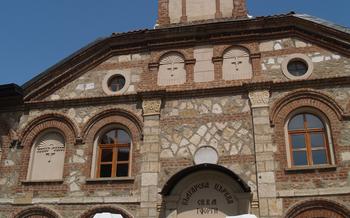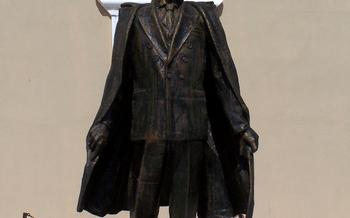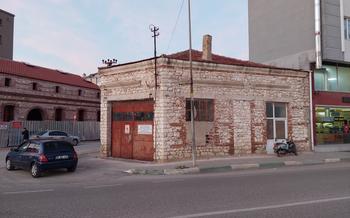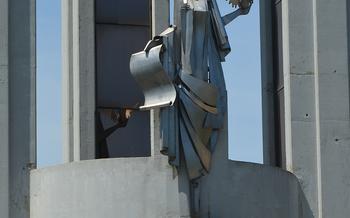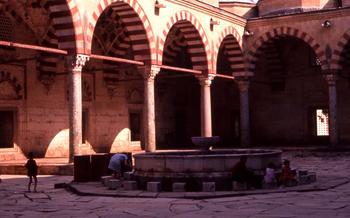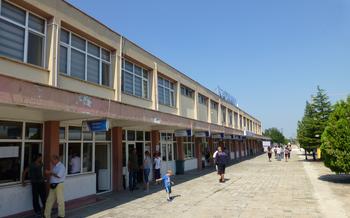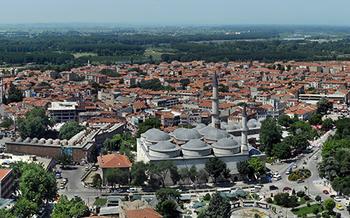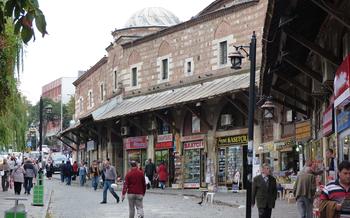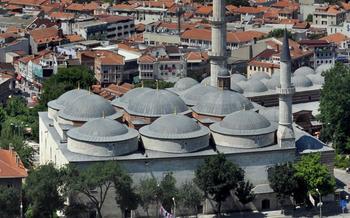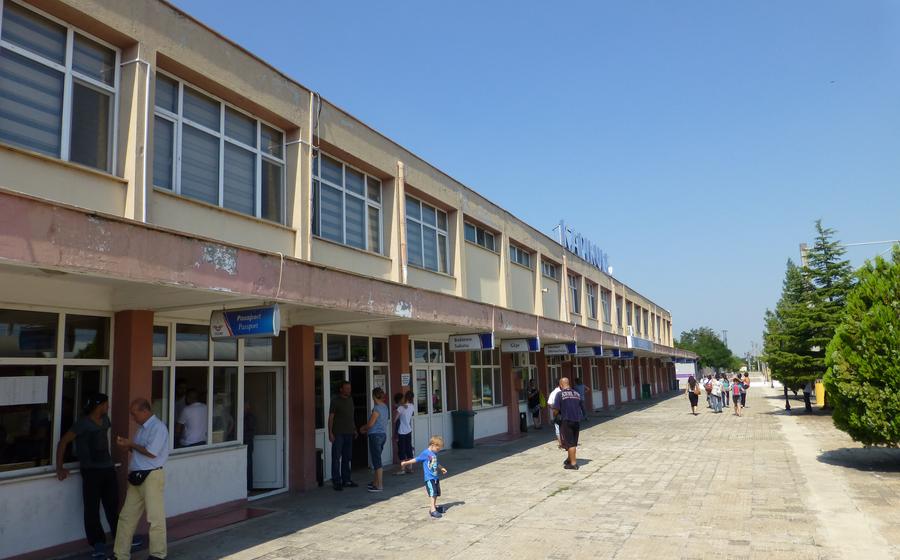
Balkan War Museum
- Things to Do in Turkey: Edirne - Visit the Balkan War Museum
- Location and Accessibility
- Museum Layout and Exhibits
- Interactive Elements
- Guided Tours and Workshops
- Temporary Exhibitions: Showcasing New Perspectives
- Educational Programs
- Research Facilities
- Museum Shop and Souvenirs
- Accessibility and Facilities
- Visitor Information and Services
- Photography and Social Media
- Nearby Attractions and Activities
- Travel Tips and Advice
- Insider Tip: Unveiling Hidden Treasures
Things to Do in Turkey: Edirne - Visit the Balkan War Museum
Historical Significance
The Balkan War Museum in Edirne, Turkey, stands as a testament to the region's tumultuous past and the devastating impact of the Balkan Wars. This museum serves as a vital repository of memories, preserving the stories and artifacts that chronicle the struggles and sacrifices of those who fought and suffered during this defining period. Through its comprehensive collection, the museum plays a crucial role in educating visitors about the intricate history of the Balkan region and the lasting legacy of the wars that shaped its destiny.
The museum's collection boasts a diverse array of artifacts, ranging from military uniforms and weapons to personal belongings and poignant letters. These tangible remnants of the past offer a tangible connection to the human experiences that unfolded during the wars. Visitors can trace the course of the conflicts through maps, photographs, and detailed accounts, gaining a deeper understanding of the political and social forces that fueled the fighting. The Balkan War Museum is not just a repository of history; it is a place where the past comes alive, inviting visitors to reflect on the complexities of war and the enduring quest for peace.
Location and Accessibility
The Balkan War Museum is conveniently situated in the heart of Edirne, Turkey, at the following address: Balkan Savaşları Müzesi, Karaağaç Mahallesi, 22100 Edirne Merkez/Edirne. Reaching the museum is a breeze, whether you prefer public transportation or the comfort of your car.
To get there by public transport, hop on any bus or tram that stops near the museum. The closest tram stop is Karaağaç Tramvay İstasyonu, just a short walk from the museum's entrance. Alternatively, you can take a taxi or rent a car to enjoy the flexibility of exploring the city at your own pace.
Once you arrive, you'll find yourself in the vicinity of several other attractions that complement your visit to the Balkan War Museum. The majestic Selimiye Mosque, a testament to Ottoman architectural prowess, stands tall just a few minutes away. The historic Edirne Bedesteni, a covered market dating back to the 15th century, is also within easy reach, offering a glimpse into the city's vibrant past.
Museum Layout and Exhibits
The Balkan War Museum is thoughtfully organized into various sections, each showcasing a distinct aspect of the Balkan Wars. The main gallery, dedicated to the First Balkan War, features an array of artifacts, including uniforms, weapons, maps, and personal belongings of soldiers who fought in the conflict. Visitors can trace the course of the war through interactive displays and detailed exhibits, gaining insights into the major battles and the political dynamics that shaped the region at the time.
The second gallery focuses on the Second Balkan War, presenting a comprehensive overview of the conflict, its causes, and consequences. Here, visitors can examine artifacts related to the various armies involved, including the Ottoman Empire, Bulgaria, Serbia, Greece, and Romania. The exhibits shed light on the shifting alliances and territorial disputes that fueled the war, as well as the devastating impact it had on the region.
In addition to these main galleries, the museum also features specialized sections dedicated to the role of women in the Balkan Wars, the experiences of prisoners of war, and the artistic and cultural expressions inspired by the conflicts. These sections offer a multifaceted perspective on the wars, highlighting the human toll, the social transformations, and the enduring legacy of this tumultuous period in history.
Interactive Elements
The Balkan War Museum offers a range of interactive displays and multimedia presentations to enhance visitors' engagement with the exhibits and deepen their understanding of the Balkan Wars. These interactive elements bring history to life, allowing visitors to explore and learn in a dynamic and immersive way.
One of the highlights is the interactive map of the Balkan region, which allows visitors to trace the movements of armies, the shifting borders, and the major battles of the Balkan Wars. Visitors can zoom in on specific areas to learn more about the historical events that took place there.
Another popular interactive display is the "Voices of the Balkan Wars," which features audio recordings of firsthand accounts from soldiers, civilians, and journalists who witnessed the conflicts. These personal narratives offer a powerful and moving perspective on the human toll of the wars.
The museum also features a virtual reality experience that takes visitors back in time to the battlefields of the Balkan Wars. Using VR headsets, visitors can immerse themselves in the sights and sounds of the conflicts, gaining a visceral understanding of the horrors of war.
By incorporating these interactive elements, the Balkan War Museum creates a truly engaging and memorable experience for visitors, allowing them to connect with the history of the Balkan Wars on a deeper level.
Guided Tours and Workshops
The Balkan War Museum offers guided tours that provide visitors with a deeper understanding of the exhibits and their historical context. These tours are led by knowledgeable experts who can answer questions and share insights that enhance the museum experience. Guided tours are available in various languages, making the museum accessible to international visitors.
In addition to guided tours, the museum also offers educational workshops and programs for groups and individuals. These workshops are designed to engage participants in hands-on activities and discussions related to the Balkan Wars. They provide an opportunity for visitors to learn more about the region's history, culture, and the impact of the wars on its people.
To book a guided tour or workshop, visitors can contact the museum in advance. Reservations are recommended, especially for groups, to ensure a spot. The museum's website and social media channels provide up-to-date information on available tours and workshops, as well as instructions on how to make reservations.
Temporary Exhibitions: Showcasing New Perspectives
In addition to its permanent collection, the Balkan War Museum is committed to presenting temporary exhibitions that explore new perspectives and themes related to the Balkan Wars. These exhibitions often focus on specific aspects of the conflicts, such as the role of women, the experiences of soldiers, or the political and diplomatic developments that led to the wars.
Temporary exhibitions at the Balkan War Museum are designed to challenge visitors' understanding of the conflicts and encourage them to think critically about the causes and consequences of war. They also provide a platform for emerging scholars and researchers to share their findings and contribute to the ongoing dialogue on the Balkan Wars.
Upcoming temporary exhibitions at the Balkan War Museum include:
-
Women in the Balkan Wars: Their Stories, Their Struggles (June 15 - September 15, 2023): This exhibition will highlight the experiences of women during the Balkan Wars, shedding light on their roles as soldiers, nurses, refugees, and activists.
-
The Balkan Wars in Cartoons: A Satirical Look at the Conflicts (October 1, 2023 - January 15, 2024): This exhibition will showcase a collection of political cartoons from the Balkan Wars, offering a humorous and critical perspective on the conflicts.
-
The Legacy of the Balkan Wars: From Conflict to Cooperation (February 1, 2024 - April 30, 2024): This exhibition will explore the long-term impact of the Balkan Wars, examining the region's journey from conflict to cooperation in the years since the wars ended.
Visitors to the Balkan War Museum are encouraged to check the museum's website or social media channels for updates on upcoming temporary exhibitions. These exhibitions offer a unique opportunity to learn more about the Balkan Wars and gain new perspectives on these complex conflicts.
Educational Programs
The Balkan War Museum is dedicated to promoting knowledge and understanding of the Balkan Wars through its comprehensive educational programs. These programs are designed to cater to students, researchers, and the general public, offering a range of opportunities for learning and engagement.
The museum organizes lectures, seminars, and workshops that explore various aspects of the Balkan Wars, featuring renowned historians, scholars, and experts. These events provide a platform for discussing new research, sharing insights, and fostering dialogue on the region's history.
For students, the museum offers educational tours and workshops tailored to different grade levels. These programs aim to bring history to life, allowing students to learn about the Balkan Wars through interactive activities, hands-on experiences, and discussions.
Researchers and historians can benefit from the museum's extensive research facilities, including a well-stocked library, archives, and digital resources. The library houses a vast collection of books, journals, and documents related to the Balkan Wars, providing scholars with access to primary sources and up-to-date research materials.
By participating in the museum's educational programs, visitors can gain a deeper understanding of the complex history of the Balkan Wars, its impact on the region, and its relevance to contemporary issues.
Research Facilities
The Balkan War Museum is not just a place to showcase historical artifacts; it also serves as a valuable research center for scholars and historians studying the Balkan Wars. The museum houses an extensive library, archives, and digital resources, providing researchers with access to a wealth of primary sources and scholarly works. The library contains a vast collection of books, periodicals, and manuscripts related to the Balkan Wars, as well as a specialized collection of rare and out-of-print materials. The archives hold a treasure trove of documents, including official records, personal papers, maps, and photographs, which provide invaluable insights into the political, military, and social aspects of the conflict.
The museum's digital resources include an online database of artifacts, a searchable catalog of the library and archives, and a collection of digital images and multimedia materials. These resources allow researchers to access information and conduct research remotely, making the museum's collections accessible to scholars worldwide. The museum's research facilities have supported groundbreaking work by historians, leading to new insights into the causes, course, and consequences of the Balkan Wars.
One notable example is the research conducted by Dr. Maria Antoniou, a historian from the University of Athens. Dr. Antoniou used the museum's archives to uncover previously unknown documents that shed light on the diplomatic negotiations between Greece and the Ottoman Empire in the lead-up to the First Balkan War. Her findings were published in a prestigious academic journal and significantly contributed to our understanding of the outbreak of the conflict.
The Balkan War Museum's commitment to research and scholarship makes it an indispensable resource for anyone interested in studying the history of the Balkan Wars. The museum's collections and facilities provide researchers with the opportunity to explore new perspectives, challenge existing interpretations, and contribute to a deeper understanding of this complex and fascinating period in history.
Museum Shop and Souvenirs
The Balkan War Museum features a well-stocked gift shop where visitors can purchase a variety of souvenirs and mementos to commemorate their visit. From books and postcards to replicas of artifacts and traditional crafts, the museum shop offers a diverse selection of items that cater to different tastes and budgets.
The proceeds from the museum shop play a crucial role in supporting the museum's educational and research initiatives. By purchasing souvenirs, visitors not only take home a tangible reminder of their experience but also contribute to the preservation and promotion of the museum's valuable collection.
Among the unique souvenirs available at the museum shop are replicas of ancient coins, pottery, and weapons, allowing visitors to own a piece of history. Traditional Turkish handicrafts, such as carpets, pottery, and textiles, are also popular choices, offering a glimpse into the region's rich cultural heritage.
For those interested in delving deeper into the history of the Balkan Wars, the museum shop offers a selection of books, including historical accounts, memoirs, and academic studies. These publications provide valuable insights into the events that shaped the region and its people.
Whether you're looking for a unique gift for a friend or family member or simply want to take home a memento of your visit, the Balkan War Museum's gift shop is a must-visit. Your purchase not only supports the museum's important work but also allows you to carry a piece of history with you.
Accessibility and Facilities
The Balkan War Museum is committed to creating an inclusive environment for visitors of all abilities. Wheelchair ramps and elevators ensure that the museum is accessible to visitors with mobility challenges. Audio guides are available in multiple languages to assist visitors with hearing impairments. The museum also provides spacious restrooms, lockers for storing personal belongings, and a cafeteria where visitors can relax and enjoy a snack or meal. The friendly and knowledgeable staff is always ready to assist visitors with any questions or requests.
Visitor Information and Services
For further information or inquiries, visitors can contact the Balkan War Museum via phone, email, or by visiting the official website. The museum staff is dedicated to providing assistance and answering any questions visitors may have about the exhibits, programs, or events. Additionally, the museum offers a range of services to enhance the visitor experience, including group discounts, guided tours in various languages, and educational resources for teachers. The friendly and knowledgeable staff is always ready to assist visitors, ensuring a seamless and enjoyable museum experience.
Photography and Social Media
The Balkan War Museum welcomes visitors to capture their experiences through photography and share them on social media. However, to ensure the preservation of the artifacts and the peaceful atmosphere of the museum, flash photography and tripods are not permitted. Visitors are encouraged to use their smartphones or compact cameras to document their visit. Sharing photos and videos on social media is encouraged, and the museum appreciates being tagged or mentioned in posts. By using specific hashtags or tags, visitors can connect with other museum enthusiasts and share their unique perspectives on the Balkan Wars. Capturing memorable moments at the museum and sharing them online helps promote the museum's mission and encourages others to explore this important historical site.
Nearby Attractions and Activities
After immersing yourself in the Balkan War Museum's historical treasures, Edirne offers a myriad of other attractions to enhance your travel experience. A short walk from the museum, you'll find the majestic Selimiye Mosque, a masterpiece of Ottoman architecture renowned for its grandeur and intricate tilework. Take a guided tour to learn about its fascinating history and admire its stunning interior. For a cultural immersion, visit the Edirne Museum, which houses a collection of artifacts, traditional costumes, and handicrafts that showcase the region's rich cultural heritage.
Stroll along the banks of the Meriç River and soak in the tranquil atmosphere, admiring the scenic views of the city's skyline. Cross the river to explore the historic Karaağaç district, where charming wooden houses, cobblestone streets, and traditional shops transport you back in time. Don't miss the opportunity to savor the local cuisine at one of the many traditional restaurants, indulging in delicacies like Edirne tava ciğeri (liver dish) and keşkek (wheat and meat stew).
For nature enthusiasts, the nearby Dağkapı National Park offers a serene escape just a short drive from the city. Immerse yourself in the beauty of lush forests, cascading waterfalls, and diverse wildlife. Hike through the park's scenic trails, have a picnic by the river, or simply relax and enjoy the tranquility of nature. Whether you're seeking cultural immersion, architectural wonders, or natural beauty, Edirne has something to offer every traveler.
Travel Tips and Advice
To make the most of your visit to the Balkan War Museum, consider planning your trip during the spring or fall when the weather is pleasant for exploring both the museum and the city of Edirne. Remember to wear comfortable shoes as you'll be doing a lot of walking inside the museum and around the grounds. To save money on transportation, opt for the local buses or trams, which are affordable and reliable. As for accommodation, there are several budget-friendly options available, including hostels and guesthouses. To save on food, consider trying some of the local street food or visiting the traditional markets for fresh and delicious produce.
Insider Tip: Unveiling Hidden Treasures
Beyond the main exhibits, the Balkan War Museum holds hidden gems waiting to be discovered by curious visitors. One such gem is the secret room, tucked away in a secluded corner of the museum. This room houses a collection of rare artifacts, personal belongings, and documents that offer a glimpse into the lives of soldiers and civilians during the Balkan Wars. From handwritten letters and diaries to uniforms and military equipment, these items provide a tangible connection to the past and shed light on the personal stories of those who lived through this turbulent period.
Another hidden treasure is the museum's rooftop terrace, which offers a panoramic view of Edirne and the surrounding countryside. From this vantage point, visitors can appreciate the city's rich history and its strategic location at the crossroads of Europe and Asia. The terrace is a perfect spot to soak in the atmosphere, reflect on the museum's exhibits, and gain a deeper understanding of the region's complex past.
